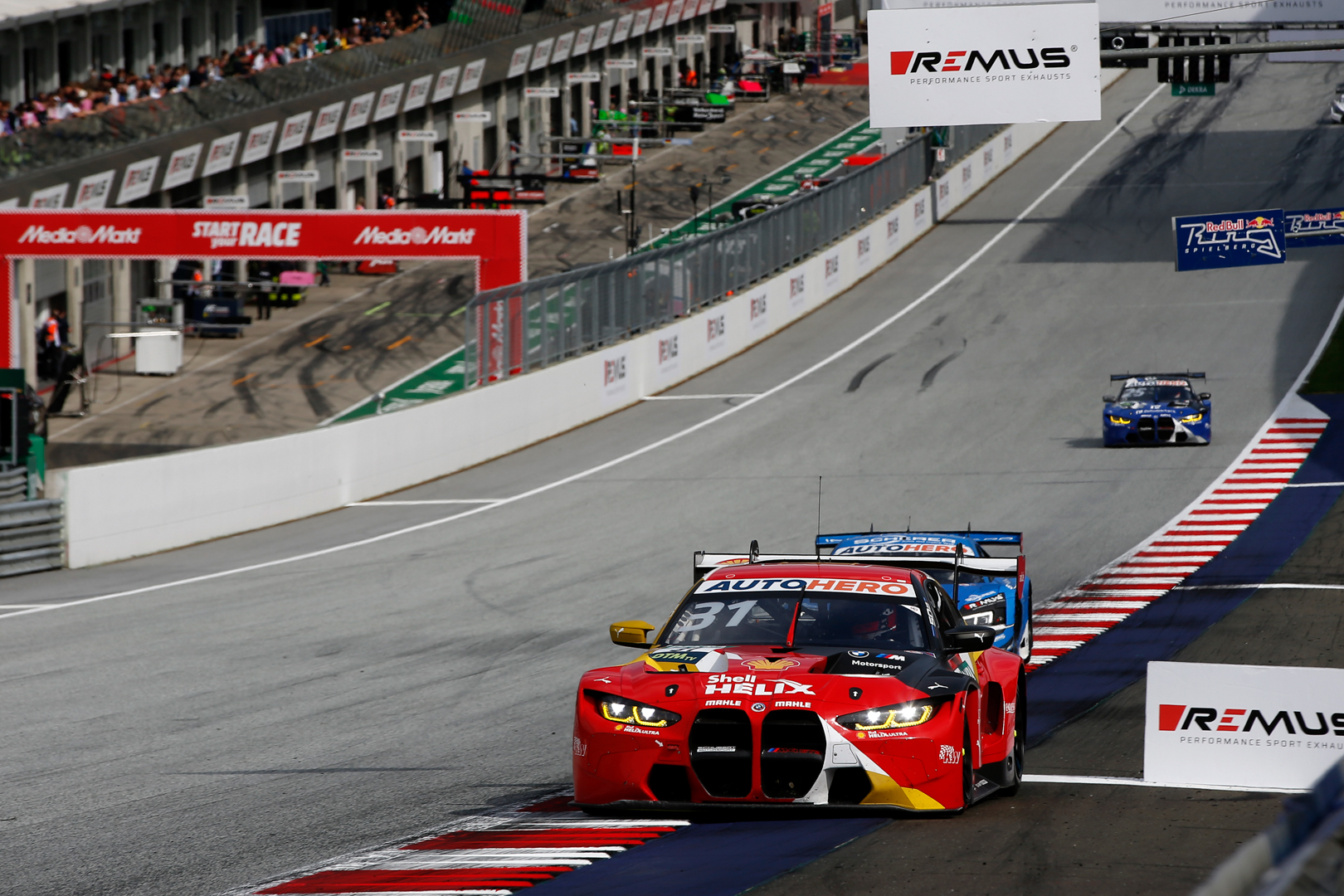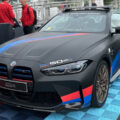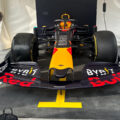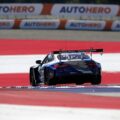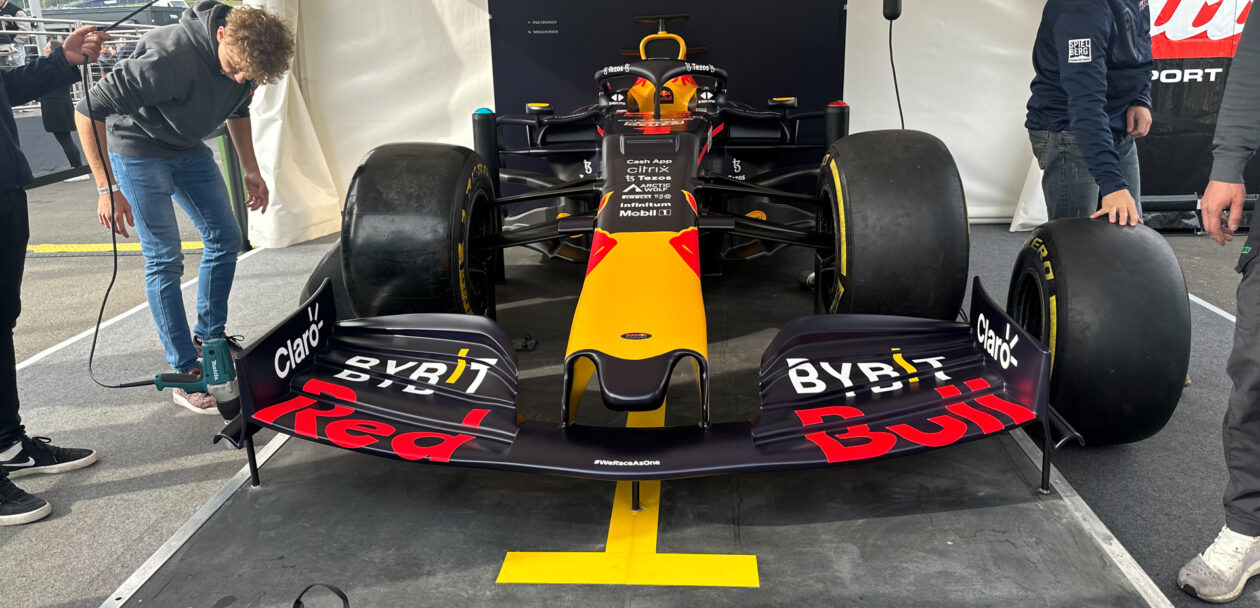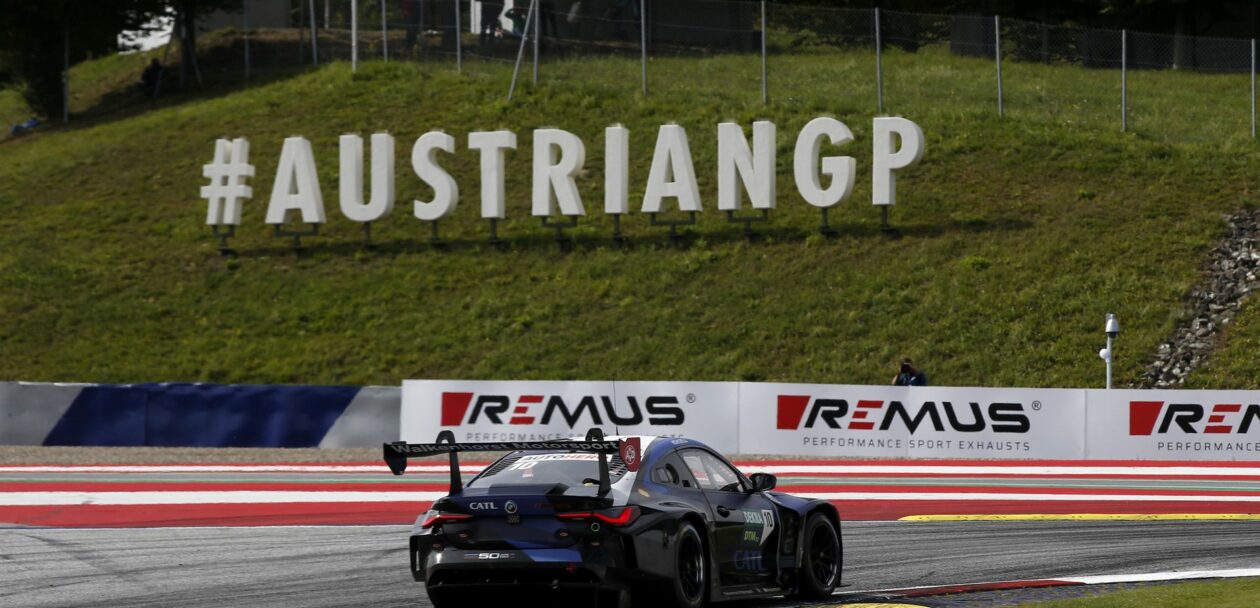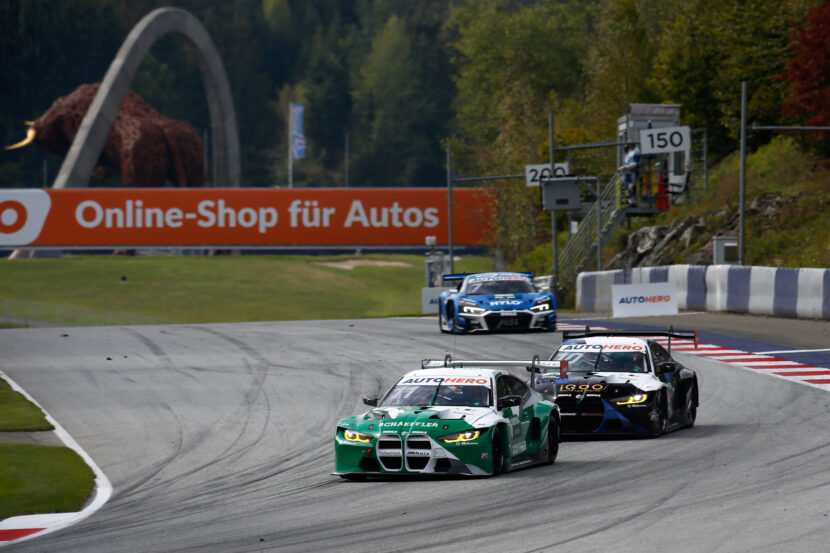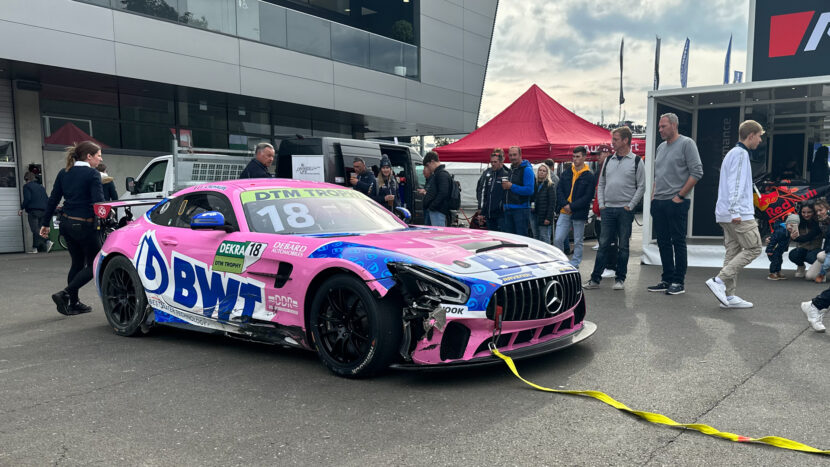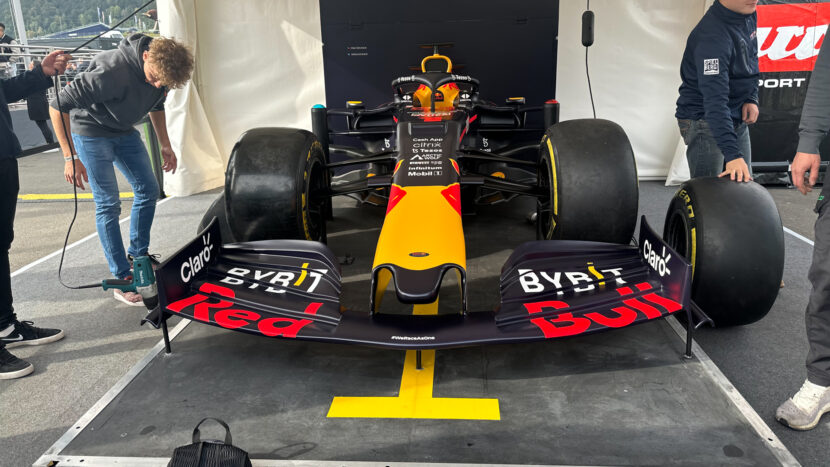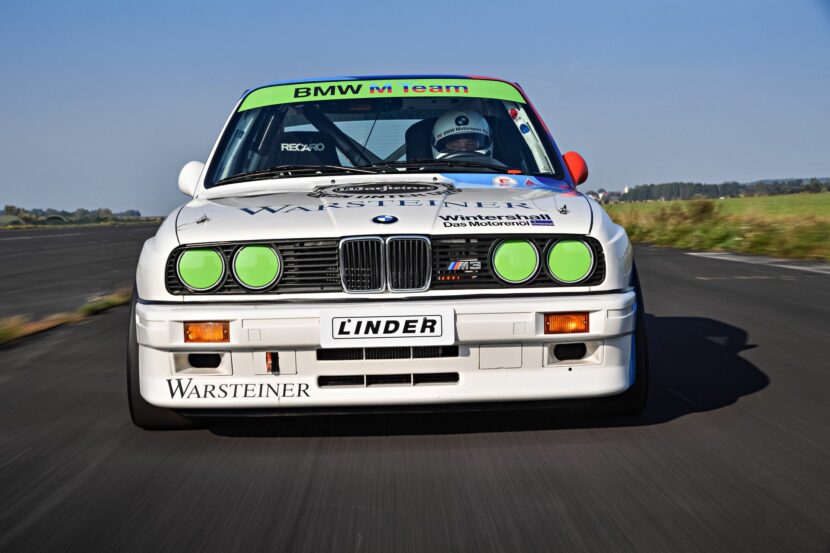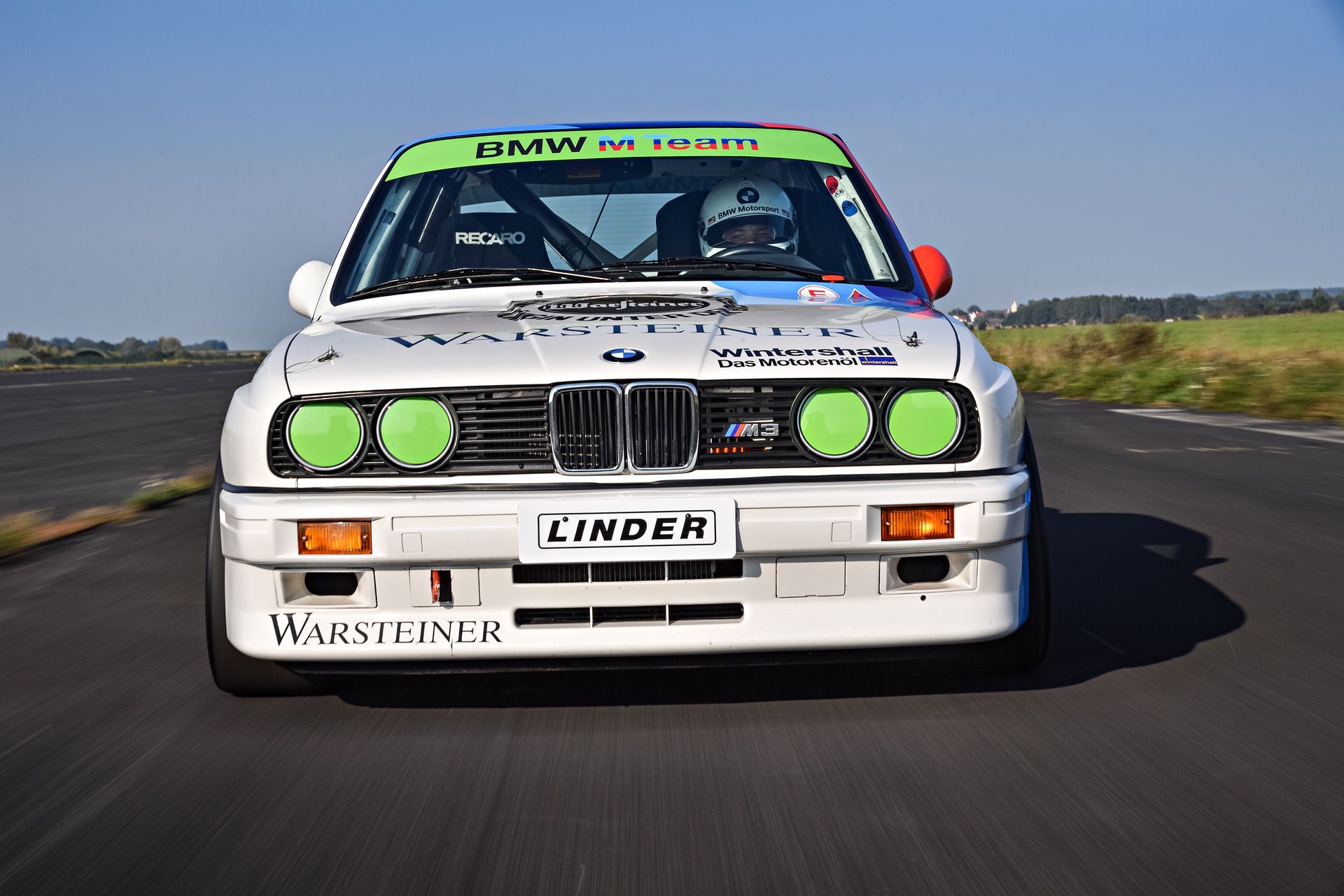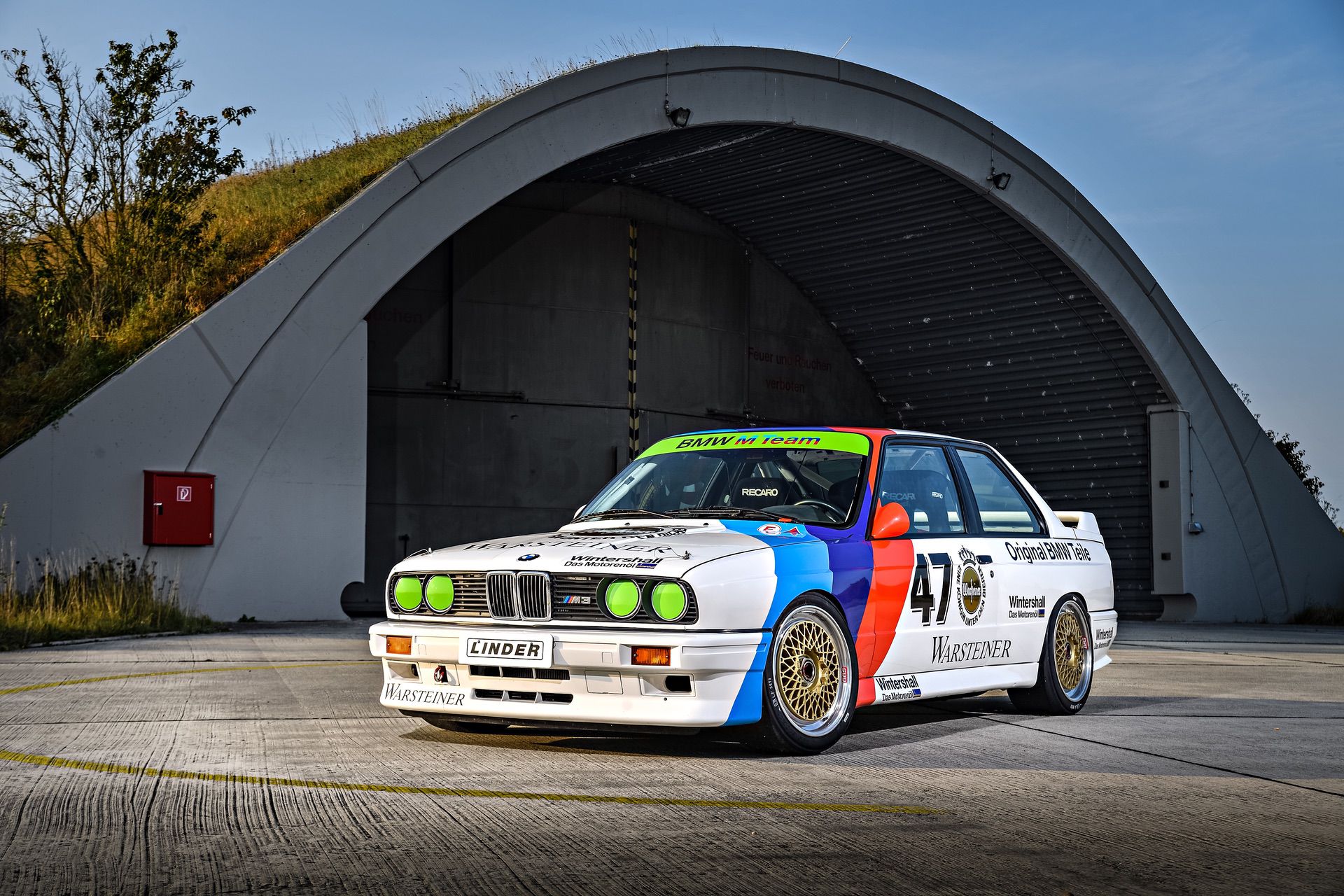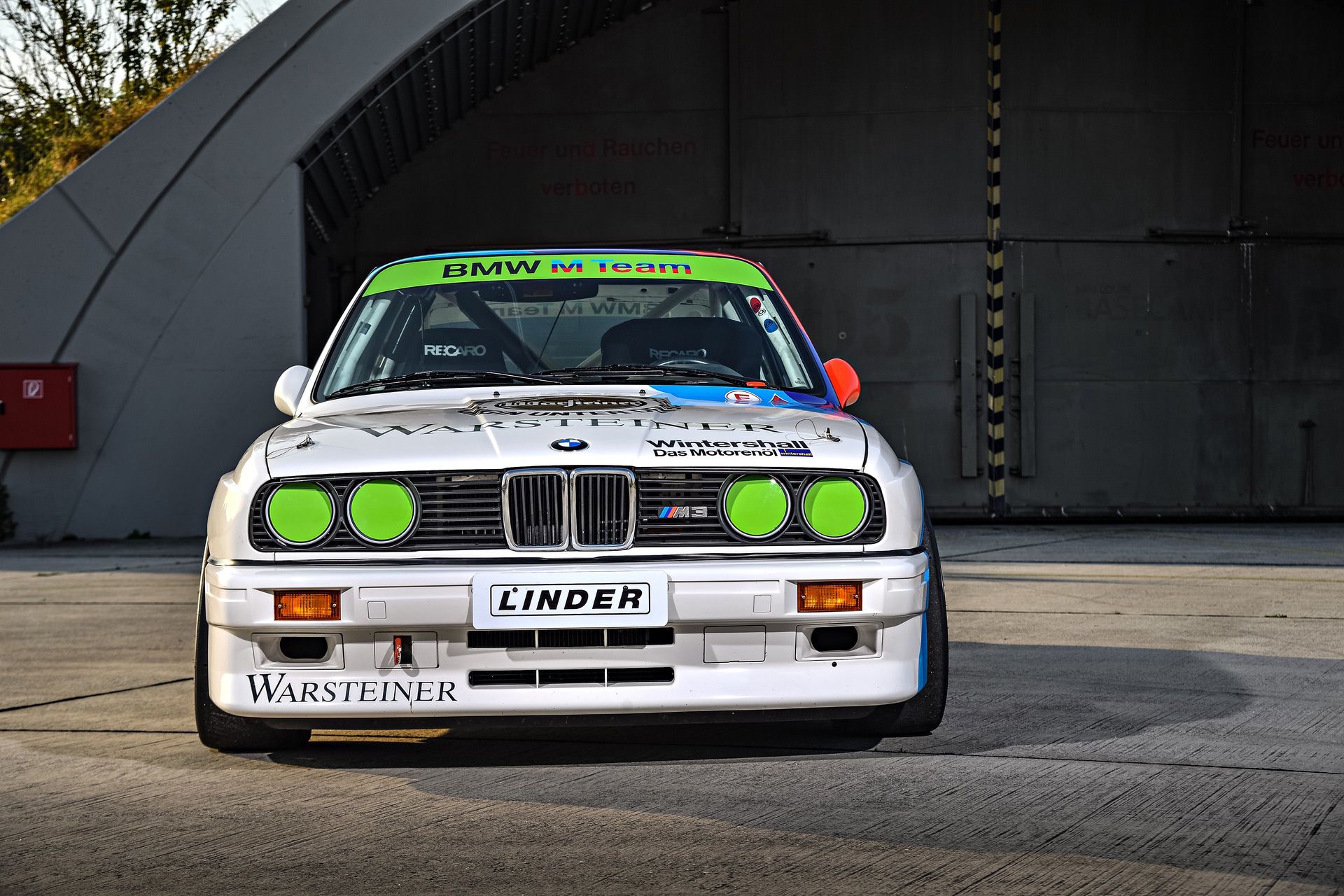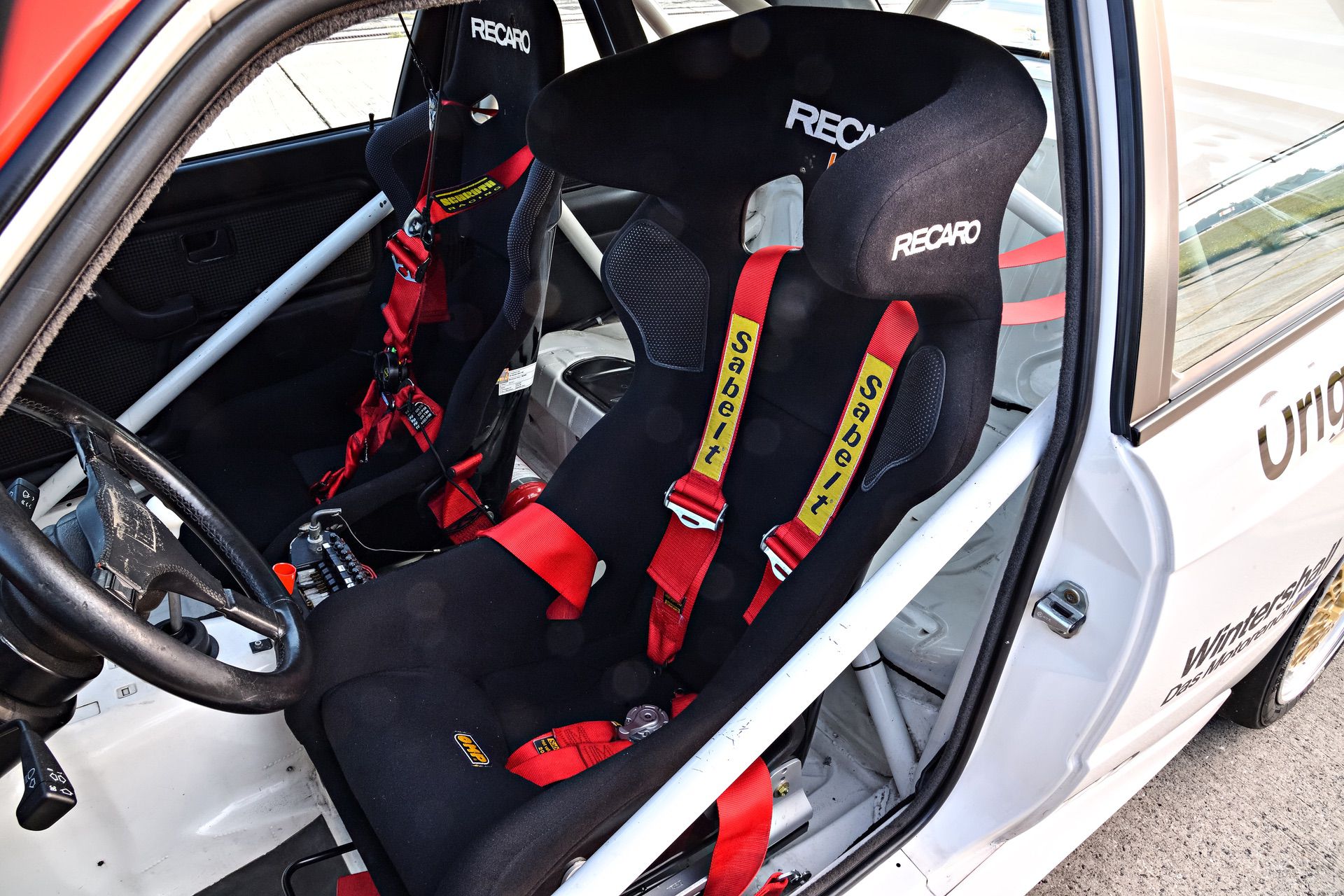I’m sure like many BMW enthusiasts, especially those in the U.S. and the U.K., I’ve long been aware of DTM, the German Touring Car racing series. It’s a motorsport that BMW has been affiliated with since before it even had an M Division, so there’s a long history between the two and DTM is hugely important to BMW. However, like many American and British enthusiasts, I wasn’t fully immersed in the world of DTM, knew little about its rules, and rarely, if ever, watched a race. But that all changed just a few days ago.
DTM, like all motorsport series’, wants a bigger, broader audience than it currently has. So, ahead of its recent weekend at the Red Bull Ring, the organizers of DTM decided to bring along new members of the media, journalists, and influencers to fully experience the DTM championship. So BMW flew me out to Munich in the lap of luxury, handed me the keys to a BMW M4 Competition xDrive, and sent me on my way. I’d never been to Europe before, so driving through Germany, into Austria, was a very new experience, as you might imagine. However, it was a great experience and one that left me in awe of the country itself and appreciative of the DTM racing series.
From Munich to Graz
My day on Thursday started in Garching, the home of BMW’s M Division and my hotel. Having never been to Germany, I didn’t know what to expect, so I certainly didn’t expect Garching to be a sleepy, quiet town, especially considering it’s the home to many businesses and located so close to Munich.
When I arrived at BMW M, I was greeted kindly and escorted to a room that can only be described as the garage of a Bond villain’s lair. Concrete walls, mood lighting, and two rows of Individual-painted M cars made it seem like I’d snuck into the base of a monocle-clad megalomaniac. Then, I was handed the keys to a bright green M4 Competition xDrive, given a toll pass for the Austrian border, an M engineer politely switched the iDrive to english for me, and I was on my way.
Having never driven in Germany before, I didn’t know what to expect. However, German roads are so well organized, the signage is so brilliantly laid out, and German drivers’ discipline is so good that, despite the fact that I can’t speak or read German, driving there was a breeze. In fact, when I finally returned home to New Jersey, I was actually more confused leaving the airport than I was during any point in Germany.
After leaving the M Division’s press fleet, my destination was Graz, Austria, where my next hotel was, near the Red Bull Ring in Spielberg. My navigation was set, with four and a half hours left to go. The nav, along with the fine people at BMW M, had suggested the Autobahn. Not only was it the fastest route but it would also allow me to experience Germany’s famously unrestricted highway. However, after just a short while on the Autobahn, I realized I’d rather add some time to my journey and get lost a bit. So I told Google Maps to avoid highways and exited the world’s fastest public road.
From there, I certainly got lost a bit but it was a ton of fun. German farmland roads are hilarious: they’re barely wide enough for their two lanes of opposite traffic, their speed limits are shockingly high for an America, and locals will treat them as if they’re rally stages while driving small vans and work trucks. It was even a bit terrifying at times, especially because the M4 is a bit wider than I’d like for such roads.
However, when I finally reached Graz Austria, after about six hours of driving, it was time for some much needed rest, as I had a long day ahead of me.
A Fish Out of Water
Typically, on press events, journalists come in waves, often grouped by country—or region—of origin. That way, people speak the same language. However, I was the only native-english speaking person on the trip. The rest were German. I was also the only car journalist. The rest were influencers, mostly for fashion. If you’ve seen me in person, you’d know that fashion isn’t my strong suit. So you can imagine that I felt like a fish out of water, especially because I speak about as much German as I do Dothraki. So communication breakdowns were quite regular.
Thankfully, the people at DTM and BMW spoke perfect english but even then, everything was spoken in German first and then specifically translated to english, just for me. That felt awkward.
However, once I hit the track, I felt home. The Red Bull Ring is a massive F1 circuit, with incredible facilities, in the middle of stunning Austrian forests. However, it’s still a race track, filled with loud race cars, and packed with racing enthusiasts. Fish out of water, no longer.
What’s a DTM Race Like to Attend?
For fans, DTM is a great race to attend. Like with most races, the parking lot is full of festivities for fans to enjoy. There were some of the usual things, like a couple of racing sims, a ton of food vendors, cool car displays, and shops to buy team apparel. However, the Red Bull Ring featured a few interesting activities I hadn’t seen at any race prior.
One such activity was a competitive Formula 1 tire change game, featuring a real F1 car tire change. It was actually the front of a Red Bull F1 car, with the real air-powered wheel guns, and teams of either one or two would have to see who could swap tires the fastest. It was a lot of fun watching beer-filled fans try and beat each other at changing the tires on an F1 car.
Speaking of beer, there was a full bar, on a meter-tall platform, in the middle of the parking lot. It was pretty awesome and was packed the entire race. Fans were sitting pretty, drinking whatever they wanted, enjoying the sounds of race cars ripping past. It looked like a lot of fun.
As a father, I also so wished I could have brought my five-year-old son with me. He loves cars because he knows I do, and he watches every F1 grand prix with me, and the DTM race was incredibly family friendly. There was a miniature go-kart course for small children, a massive inflatable bounce house, and countless children in attendance. So families are absolutely welcome.
Inclusivity Is Key
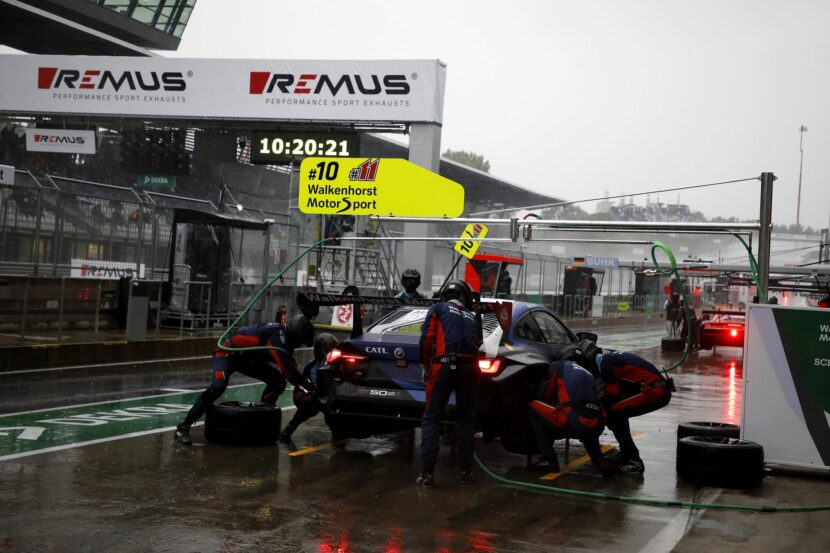
One of the reasons why fans love DTM so much is its inclusivity. Fans are allowed to do grid walks prior to the race, allowing them to not only get up close and personal with the race cars but also the drivers. Race car drives are like rockstars on the grid walk, with fans throwing themselves at them. What was great, though, was just how many fans could interact with the drivers, take pictures with them, and check out the cars. Experiences like that make lifelong fans of not only the sport but the drivers and create lasting memories.
Prior to the grid walk, fans could also line up outside the pit garages and meet the drivers, who will sign countless autographs. During that time, fans can see how the mechanics work on the cars and prep them for the race. For the geeky car nerds in all of us, seeing them take the cars apart and put them back together is almost as fun as watching the race itself.
Being a member of the media that BMW brought along, I was able to watch the race from the pit garage, watch as engineers and strategists worked during the race, and see a genuine pitstop up close. It was incredibly cool.
What Makes DTM Different From Other Races?
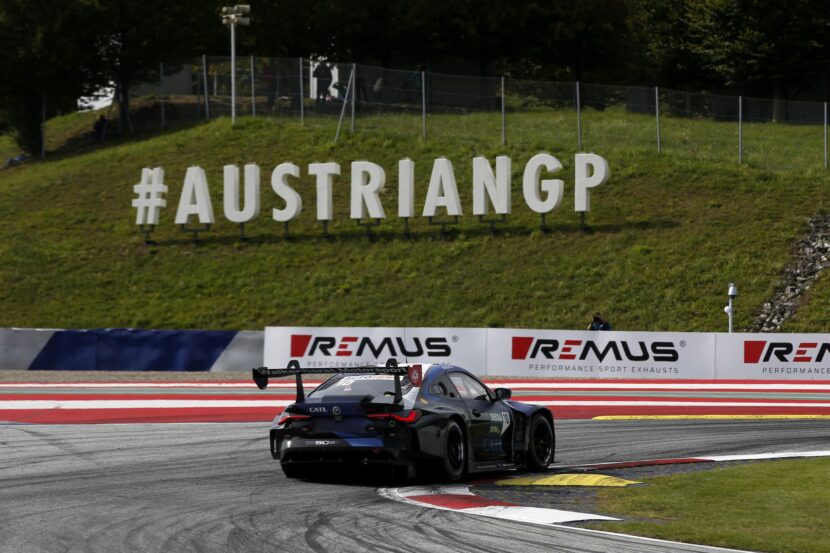
DTM now uses FIA GT3 rules, which creates a pretty specific set of parameters for both the cars and the teams. Teams can only use cars that meet GT3 homologation requirements, such as the BMW M4 GT3, the Audi R8 LMS Evo II, the Mercedes-AMG GT3 Evo, Porsche 911 GT3 R, and the Lamborghini Huracan GT3 Evo. Additionally, those cars need specific weight and power specs. Cars must weigh between 1,200-1,300 kg and make between 500-600 horsepower.
Weight ballasts are also added to cars that win. For instance, if a car wins a race, it get a 25 kg weight ballast added to it for the next race. Second place cars get 18 kg ballasts, and third place cars get 15 kg ballasts. All in the name of parity. The idea is to create a more even playing field for the drivers to compete based on skill, not just the engineering might of their car and/or engineering team.
It’s also unique in that teams use two cars with two separate drivers, so each driver has their own car. That means drivers don’t have to adjust to a car that might be setup for another driver’s preferences. It makes each car a bit more specialized for each driver, which leads to more interesting races.
Like Formula 1, DTM requires each driver to make at least one tire change. Though, since DTM doesn’t use different tire compounds (hard, medium, soft), there’s less performance strategy to the tire change. However, that doesn’t mean there isn’t any performance strategy at all. Teams painstakingly plan their one pit stop, based on weather, temperature, and track-specific aero. They also have to account for the fact that drivers will lose a few seconds per lap for the first few laps after a tire change, as the slick new tires lack grip right away.
What’s also interesting is that each race weekend actually features two races, one on Saturday and one on Sunday, each with their own qualifying earlier the same day. Qualifying happens in the morning, drivers take a break, sign some autographs, have some lunch, and then race in the afternoon. And that happens twice each weekend, which gives drivers a chance to quickly correct any mistakes they may have made in the first race and get a second crack at each track.
BMW’s Long History in DTM
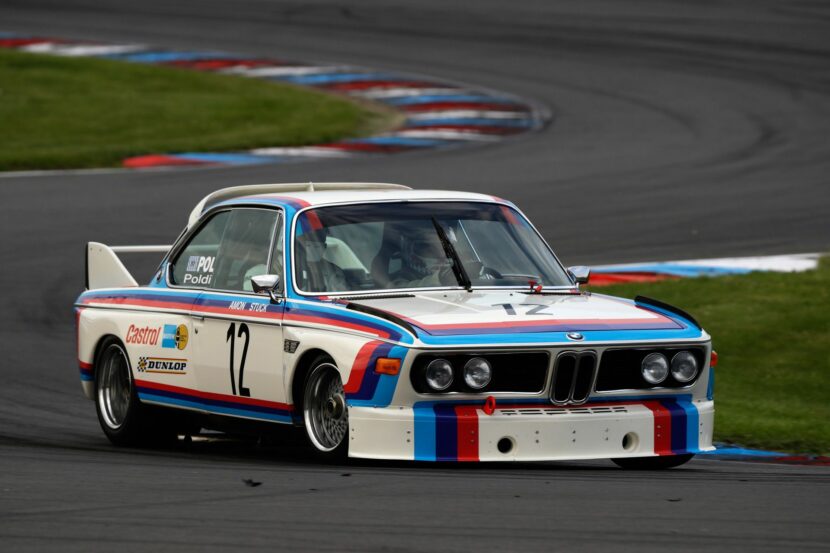
Why does BMW want more people to know about DTM? It’s simple: DTM is incredibly important to the brand and its history. BMW started its factory DTM team in 1984 and it ran all the way until 1992. During that time, it had some awesome cars, including the BMW 635CSi and, of course, the legendary E30 M3. In fact, the E30 M3 started out life as a DTM car and was then homologated to for road use, to comply with race regulations that requires race cars to be made from road cars. So not only is DTM a bit part of the brand’s history, without it we would never have had the BMW M3.
BMW’s second chapter in DTM began 20 years later in 2012, which ran until 2020. During that period, fan favorite cars such as the E92 M3 GT3 and BMW M6 GT3 were highly successful. The BMW M4 DTM Turbo was also featured and was the first M4 to race in the series.
During BMW’s time as an official factory DTM racing team, it produced five championship drivers: Volker Strycek (1984), Eric van de Poele (1987), Roberto Ravaglia (1989), Bruno Spengler (2012), and Marco Wittmann (2014).
Now, though, BMW’s factory racing team days are over. Instead, BMW M acts as support to its customer racing teams. See, there are no longer manufacturer works teams in DTM, as that would give those teams unfair advantages. Imagine a small customer racing team going up against the engineering might of BMW, AMG, Porsche, or Audi? It’d be near impossible for customer racing teams to compete. Now, customer teams buy BMW GT3 cars, such as the new M4 GT3, and BMW provides factory works drivers to those teams.
Sheldon van der Linde’s Title Chances
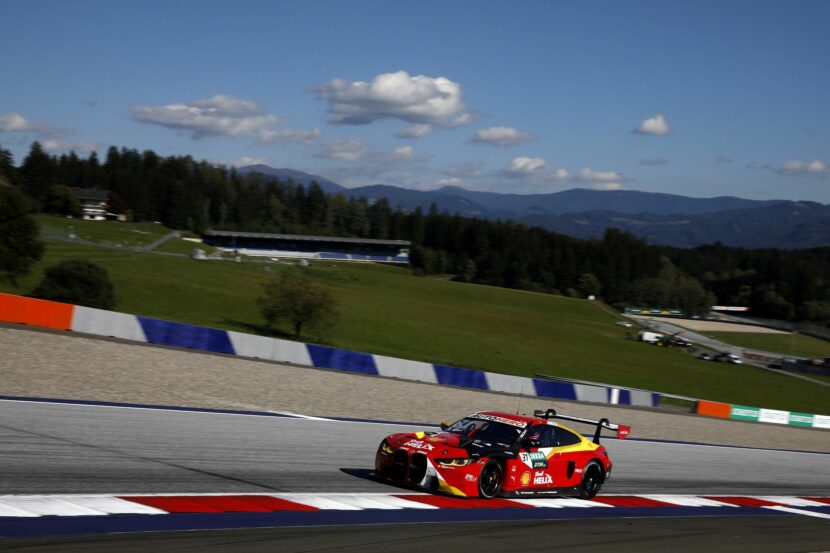
This year, BMW has a few excellent drivers for its two customer teams but its current star is Sheldon van der Linde, the 23-year-old South African driver for Team Schubert, who drives the new M4 GT3. One of the reasons I was there was to talk to van der Linde about his season and racing for BMW.
As the driver’s standing sit right now, Sheldon van der Linde is currently in the lead, with 130 points. He’s ahead of second place driver Lucas Auer, who races for Mercedes-AMG Team Winward and drives an AMG GT3 Evo and currently has 119 points. There’s only one race weekend left, which starts on October 7 at Hockenheim and van der Linde can seal the deal on his championship season.

There are two teams that run BMWs in DTM and both struggled in Saturday’s race, with van der Linde being the highest placed BMW at 11th. While I wasn’t on hand to attend Sunday’s race, he ended up finishing ninth, putting him in the points and keeping his lead alive. After Saturday’s race, I had the chance to interview van der Linde, who’s an incredibly kind and humble young driver with a ton of energy and enthusiasm (the interview will be in a separate story to come). Despite having had a rough race, he was looking forward to the next day to try and score some points for both his team and himself.
After interviewing van der Linde, it was time to leave but not before I bought a shirt for my son and had a beer in the VIP lounge us media members had access to. Overall, it was a long, tiring, awesome, and exciting day. Due to the inclusivity, the interesting rules, and kick ass cars, DTM is absolutely a racing series you should be paying attention to. If it were here in the ‘States, I’d be at as many races as I could, bringing my family along to watch and enjoy the festivities. And if DTM races near you, you should too.


